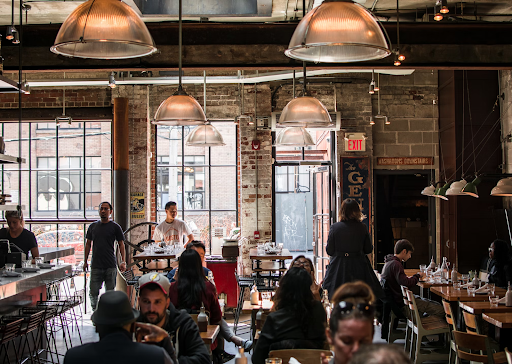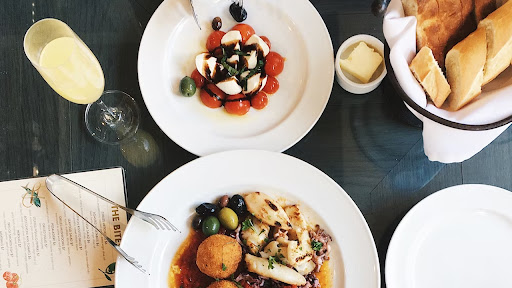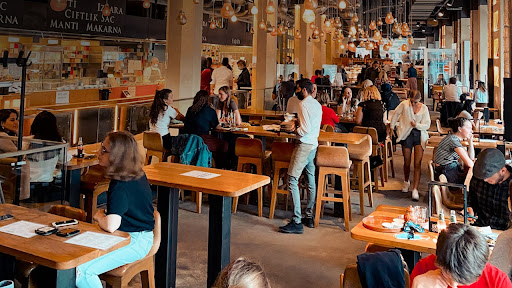Feel like you’ve hit the ceiling on what advertising can do for your restaurant? If so, you’re not alone as a small business owner.
Advertising is essential to driving customers to your location, but advertising by itself only takes your business so far. So, once you’ve got the word out, how can you continue to generate sales growth?
This is where a strong mix of customer-focused strategies come into play. After all, they can help you turn a customer’s initial visit into many. From menu pricing to your restaurant’s overall dining experience, many decisions well within your control can shift the balance between a surviving and financially thriving restaurant.
With a holistic view of your customers and a tight grasp on your business’ data, you unlock greater sales potential that can lift your restaurant’s profitability. In this article, we’ll explore eight actionable tactics you can use to help grow sales.
1. Give Customers Strong Reason to Return
Getting your customers to return is foundational for restaurant success. The “promoters” among your customer base – those guests who would highly recommend your establishment to their friends – are the fuel to maintaining a healthy bottom line.
It’s known that repeat customers spend 67% more than a new customer, and new customers can be as much as ten times more costly to acquire. Thus, providing a stellar experience to each guest who walks through your door is an extremely worthwhile investment.
To retain their best customers and stay competitive with chains, an increasing number of restaurants are deploying their own loyalty programs. An eMarketer study found that 68% of consumers like loyalty programs that are personalized to their purchase history with the establishment. By allowing customers to earn and redeem points at each visit, restaurants can make their loyalty members’ dining experiences much more personalized and pleasurable.

Finally, as a manager or owner, be in your location’s dining room whenever possible. For instance, you should occasionally be making rounds to all your seated customers during the dinner service hours and ask them how their food is. Customers will appreciate that the business operator is out on the frontlines, and helps make your restaurant even more personable.
2. Focus Your Approach to Upselling
The success of upselling relies on the rapport and relationship your server staff has with your customer.
Incorporate prompts in your server’s engagements with customers, like having them ask if a party would like appetizers or if they “have room for dessert” – these inquiries aren’t groundbreaking, but asking your customers through specific prompts (rather than leaving it to the customer’s volition) makes a huge difference on what your customer may order.
Make sure that your staff is knowledgeable on all of your dishes. When the need arises, their ability to share more information with customers can help your guests arrive at the right decision for them.
Of course, upselling is not limited to guest-server interactions, but it also includes the entire science to menu design. Put simply, placement and arrangement of your menu items and sections on a physical menu does impact what your customers are likely to notice first, and order.
3. Create Healthy Server Competitions
To motivate your servers to focus their effort on upselling, encourage them with healthy server competitions. It’s a smart way to promote positive customer experience and has potential to yield greater returns for your overall operation.
Offer a weekly or daily prize for your server who is able to successfully drive the most upsell orders of certain items or item types, like appetizers or desserts. These prizes can be gift cards, gift certificates, or other small tokens of appreciation. Above all, a friendly and personable staff who is motivated will consistently be major reasons your customers not only return, but spend more at your establishment.
4. Engage with Customers on Social Media & Review Sites
Creating positive customer experiences shouldn’t be limited to your physical location. A consistent approach to social media engagement, like replying to comments, helps you engage with your most satisfied customers at any time. Encourage your customers to share posts and check-ins from your restaurant on social media – after all, these are the customers most likely to recommend your restaurant to their friends!
Understandably, no restaurant owner wants to see negative reviews come up. But, it’s still in their best interest to reply and acknowledge any customer’s complaint. Reply promptly with an apology or “thank you for letting us know this happened,” and provide this customer with a name and contact information so you can correspond with them offline, and better understand what happened.
All businesses are great at putting themselves in the spotlight through promotions and messaging, but the ones that promptly tackle situations that are less pleasant do stand above the rest, ultimately.
5. Optimize Your Pricing
Ensure your price points are in line with your food costs, target audience, and location. Profitability is always a concern, but managing customer perception should be, too. If your restaurant is in an upscale nightlife district, ensure your prices are similar to the level of your competitors. In contrast, college towns and small local establishments should be priced reasonably given your target audience and day-to-day foot traffic.
When evaluating your menu, first calculate the profit margins of each dish available; compare the item’s menu price to its cost of ingredients and the estimated cost of preparing one dish. Then, look at your sales data to understand the exact profit impact on each individual dish. This can help you make informed decisions when it comes to pricing and its impact on your bottomline revenue.
6. Leverage Online Ordering
No matter what business you’re in, today’s customers expect the highest level of convenience. On-demand ordering among consumers through mobile and digital channels has skyrocketed since 2020, so it’s not a question of “if” online ordering is right for your location – rather, it is how you approach it, to stay competitive.
Whether it’s pre-ordering for a quick lunch pickup or takeout for a family dinner, allowing your customers to place online orders can increase your customers’ purchase frequency while eliminating activities that back up your staff, like handling incoming phone calls for orders.
Third party delivery services, like delivery apps, are a quick-start way to get onboard with online ordering, but a more cost-efficient, long-term play is budgeting out for your restaurant’s own delivery service. With the second option, there are many plug-and-play solutions that can power your own in-house delivery or takeout service.
To measure your location’s growth with online ordering, you must have a way to funnel all of your data into one place. An integrated tool like ONEBIT takes the stress and guesswork out of understanding your small business’s sales and expense data across multiple systems.
7. Improve Your Table Turnover Rate
Table turnover is simply how many customers or parties you get in and out the door in a single day. When customers occupy table space for periods of time outside of when their food is being prepared or eaten, this can increase your queue time and prevent new customers from dining with you.
To improve turnover, ensure that staff have a prompt approach to taking customers’ orders, preparing the orders, and collecting payment. By delivering quicker services, you can maximize customer delight while also being extremely mindful of your business’s bottom line revenue.
8. Host Events as Part of the Community
Finally, consider the role that your restaurant plays in your local community. Think of programs that can help your restaurant engage with area nonprofits and school organizations. Restaurant fundraisers are a great example of this – these are events where your business partners with a local organization to host an entire evening centered around their organization, and part of the profits support their cause. As a restaurant, hosting community events can build great PR, word of mouth, and of course, longer-term customer loyalty for you.
Conclusion
As a restaurant owner, don’t feel your options are limited to social media ads and outdoor advertising. Rather, be empowered by knowing that your restaurant’s customer experience is everything, and it’s the vital piece to your operation that is in your control. Better yet, you can use data to your advantage in implementing these tactics, strategically.
By consistently providing great experiences and meeting your customers where they are, positive word of mouth will grow. If you can place your restaurant as a viable dining option for your customer on any day of the week, this is where the greatest opportunity arises to boost your establishment’s revenue and see your restaurant’s sales take off.



